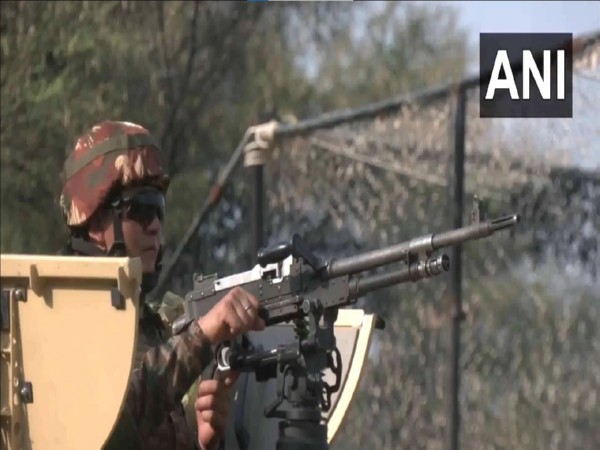Akhnoor (Jammu and Kashmir) [India], May 20 (ANI): The Indian Army has emphasised that Pakistan’s “uncoordinated” firing targeted civilian areas in Jammu and Kashmir, while in contrast, India’s reply was as swift as a blade and as coordinated as a clock.
Speaking to ANI, an Indian Army personnel said that Pakistan could not gain a difference in a hilly region, due to which they opened fire on the plains, which is India’s region.
“It was on the morning of May 10, when Pakistan could not gain a difference in the hilly sector, they opened fire on the plains, which is our region. Their motors aimed towards our forward posts, and their artillery towards our civilian areas. Their fire was not precise and uncoordinated. They were firing in a disarray… They could not have a pitched battle against the might of the Indian Army. They were firing at us in desperation”, he said.
“Our responses were controlled and coordinated… Our boys knew their job well, and we had rehearsed multiple times before… If you had seen that moment, it was thunder in the sky on their heads, it was raining bullets, mortars, and rounds of artillery… They opened fire again that night. Our reply was as swift as a blade and as coordinated as a clock”, he added.
The Indian Army also deployed several advanced defence weapons, which helped it gain an edge in the cross-firing from Pakistan after Operation Sindoor.
“Third Eye” surveillance cameras were installed at forward posts, feeding real-time data to surveillance rooms equipped with VR (Virtual Reality) interfaces. These systems enabled constant monitoring of enemy activities during Operation Sindoor and allowed for rapid targeting and response.
“Through the surveillance centre, we were tracking every movement around the clock. We would get live feeds of all their actions, and we would be prepared to deal accordingly… We stopped all their infiltration, which they attempted during shelling… Thermal imaging cameras enabled us to detect movement at night as well”, an officer of the Indian Army said.
The IGLA missile proved to be a game-changer against Pakistani fighter jets and kamikaze drones. Its major strength lies in its mobility; being shoulder-fired, it can be launched virtually from anywhere, providing flexibility and speed in dynamic combat situations.
“This is a shoulder-fired missile that works on passive IR seeking… This weapon system received its early warning through the Akashteer Command System. Its firers caught an IR signature of aerial threats and destroyed it way beyond our LOC… It success rate is high, with a kill ratio of 75% against fighters,” an Army personnel said.
Recently inducted into the Indian Army, Armado Light Specialist Vehicles were used during Operation Sindoor to target enemy posts and incoming vehicles. Equipped with anti-tank guided missile (ATGM) launchers, these vehicles offered high mobility and destructive capability against enemy armour and bunkers.
Highlighting the features of the newly inducted Anti-Tank Guided Missile, an Indian Army personnel mentioned that it can target bunkers, enemy posts, and tanks. He further said that during Operation Sindoor, the weapon was very successful and destroyed 95 per cent of its targets.
“This is an Anti-Tank Guided Missile (ATGM)… This can target bunkers and enemy posts in addition to tanks… It was extremely successful in Operation Sindoor. It has a hit probability of 90-95%,” the personnel said.
Mortars, long a staple of battlefield engagements, were once again crucial in countering Pakistan’s ceasefire violations. Used for indirect fire, these weapons were instrumental in destroying enemy posts and neutralising Pakistani shelling during the operation.
As per the Indian Army, the forces were already prepared for Operation Sindoor, and they demarcated certain points which could be used by the Pakistani Army to promote terrorist movement. Drones were used by the forces to drones to pinpoint targets, causing heavy casualties on the enemy’s end.
“We were already prepared for Operation Sindoor. We had demarcated certain points which could be used by the Pakistani Army to promote terrorist movement and support them. As soon as the ceasefire violation took place, we fired indiscriminately… We used drones for pinpoint target, causing heavy casualties on their side”, the Army personnel said. (ANI)
Disclaimer: This story is auto-generated from a syndicated feed of ANI; only the image & headline may have been reworked by News Services Division of World News Network Inc Ltd and Palghar News and Pune News and World News
HINDI, MARATHI, GUJARATI, TAMIL, TELUGU, BENGALI, KANNADA, ORIYA, PUNJABI, URDU, MALAYALAM
For more details and packages













